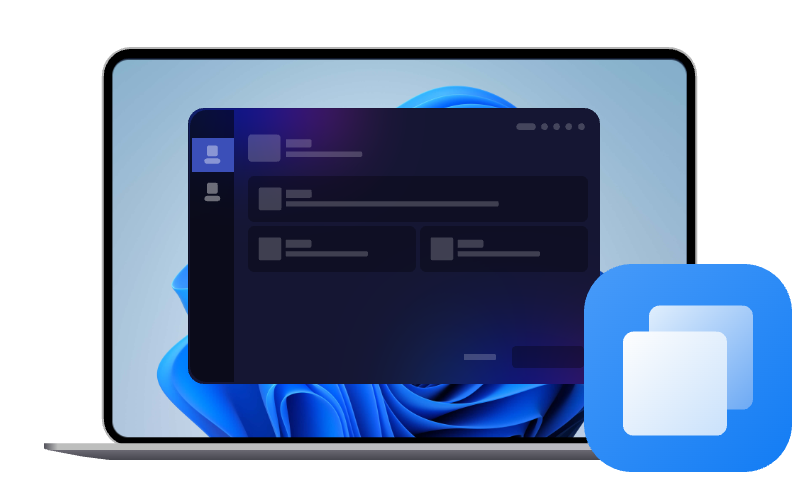How to Clone Windows 11/10 to USB Drive | 2025 Newset
Cloning your Windows 11/10 system to a USB drive is a simple way to create a portable backup or transfer your OS to another drive. This process allows you to boot and run your system directly from the USB, providing a convenient solution for system recovery or migration.
Cloning your Windows 11/10 operating system to a USB drive is a great way to ensure you have a portable backup or to migrate your system to another drive. This process can save you time and effort if you need to restore your system after a crash or if you're setting up a new computer.
In this step-by-step guide, we will show you how to clone your Windows OS to a USB drive using reliable disk cloning software, ensuring that your system is both safe, bootable, and easily accessible.
What You Need Before Windows Cloning?
Before starting cloning Windows 10 to flash drive, it’s important to prepare a few things to ensure everything goes smoothly:
- A USB Drive: You will need a USB drive with enough space to store your system. For Windows 11/10, the drive should be at least 32GB, but it may need more space depending on your system size.
- Reliable Cloning Software: Professional cloning software like AOMEI Cloner is essential to clone your OS. It provides an easy-to-use interface for cloning and ensures that your USB drive becomes bootable.

- System Clone: Clone your OS to a USB drive, SSD, or HDD without reinstalling Windows.
- Disk Clone: Clone an entire bootable drive to another drive easily and quickly.
- Bootable Media Creation: Create Bootable USB or CD/DVD for system/disk cloning from WinPE.
- Wide Compatibility: Support Windows 11/10/8/7 systems and all Windows systems, and work with USB drives from all popular brands.
- Backup: While cloning is a safe process, it's always a good idea to back up important files before starting, just in case something goes wrong.
Step-by-Step Guide: How to Clone Windows 11/10 to USB Drive
Now, let’s walk through the process of copying Windows 10 to USB drive.
1. Download and Install Cloning Software
First, download AOMEI Cloner and install it on your computer. The software has a user-friendly interface, making the cloning process easy for both beginners and experienced users.
2. Connect the USB Drive to Your Computer
Plug the USB drive into an available USB port. Make sure the system properly recognizes it. It’s recommended that the USB drive be formatted before using it for cloning to avoid any potential issues.
3. Launch the Cloning Software
Open AOMEI Cloner. On the main screen, navigate to the Clone section and choose the System Clone option. This option will automatically select and make sure the system and its boot partitions are copied.
4. Select the Destination Drive
Choose the connected USB drive as the destination for the cloned system. Make sure there’s enough space on the USB drive to accommodate the system.
5. Start the Cloning Process
After selecting the source and destination, click on Start Clone to begin the process. The software will copy the necessary files, including boot partitions, system files, and other important data. This process may take some time, depending on the size of your operating system and the speed of your drives.
6. Wait for the Cloning to Complete
The cloning process may take anywhere from a few minutes to an hour. You will be notified once the cloning process is finished. The USB drive will now contain an exact copy of your Windows 11/10 operating system.
How to Boot from Your Cloned USB Drive
Once the cloning is complete, you can boot your system from the USB drive in case of system failure or use the USB drive on a different computer. Here’s how:
1. Insert the USB Drive into Your PC
Plug the USB drive into the computer you want to boot from. Make sure it’s securely connected.
2. Restart Your Computer
Restart your computer. While it’s restarting, press the key to access the BIOS/UEFI settings. This key is typically F2, F12, ESC, or DEL, depending on your computer’s brand.
3. Set the USB as the Primary Boot Device
In the BIOS/UEFI settings, navigate to the boot order menu. Set your USB drive as the first boot device so that the system will boot from the USB rather than the internal hard drive.
4. Save Changes and Exit BIOS/UEFI
Save the changes and exit the BIOS/UEFI. Your computer should now boot from the USB drive, running your cloned Windows 11/10 system.
What to Do After Cloning?
Once your system is cloned to the USB drive, you have several options:
- Restore the System: If your internal drive fails, you can boot from the USB and restore your system to a new drive.
- Portable OS (Bootable USB): You can carry your entire operating system on the USB drive and use it on other compatible computers.
- Upgrade or Migrate: If you're migrating to a new computer or replacing a failing hard drive, the cloned USB can serve as a quick way to transfer your system.
Conclusion
Cloning Windows to a USB drive provides a reliable and portable solution for system backup and recovery. With the right software like AOMEI Cloner, this process is simple and efficient, ensuring the cloned Windows 10/11 to USB bootable. Whether you need a backup plan or are transferring your system to a new device, cloning to a USB drive is a practical choice.
FAQs on Cloning Windows to USB Flash Drive
Can I clone my Windows OS to any USB drive?
A: While any USB drive can be used, it’s recommended to use a USB 3.0 drive or higher with at least 32GB of space to ensure speed and sufficient storage.
Will the cloned USB drive be bootable?
A: Yes, if you use system cloning software like AOMEI Cloner, the USB drive will be bootable and contain everything needed to run Windows.
How long does it take to clone Windows 11/10 to a USB drive?
A: The time it takes to clone your system depends on the size of your OS and the speed of the drives. On average, it takes about 20 minutes to an hour.

